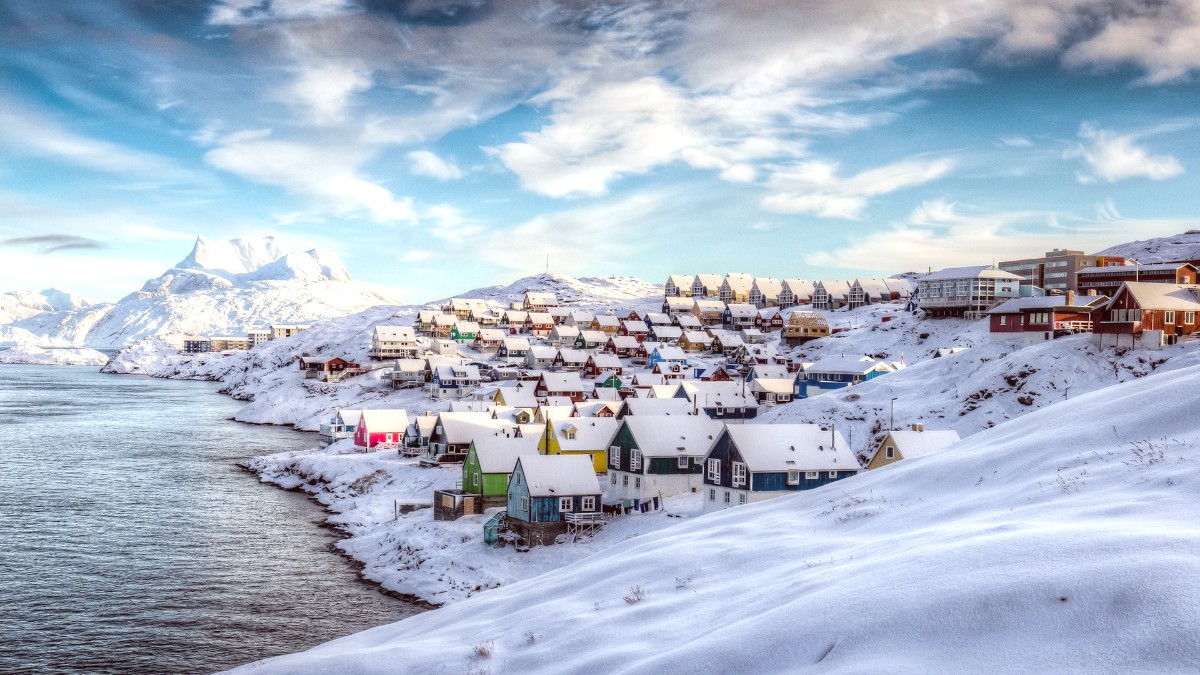
Greenland
Greenlandic cuisine emphasizes fresh seafood, marine mammals, and terrestrial game. The remote location and limited agriculture mean locals have historically relied on hunting and fishing for sustenance.
Danish influences are prominent in Nuuk, leading to a fusion of traditional Greenlandic dishes and European styles. This evolution shows centuries of cultural exchange and adaptation.
Tipping is not customary or expected in restaurants. Reservations are recommended for popular restaurants, especially on weekends or during high season.
Greenlanders value hospitality; being invited to a local home for a meal (a "Kaffemik") is a sign of welcome and an unique cultural experience.
Nuuk presents the widest variety of dining options in Greenland. You will find everything from traditional Greenlandic buffets to international cuisine.
A selection of small dishes featuring various local meats (seal, musk ox, reindeer), fish, and sometimes dried cod or whale blubber.
Look for it at restaurants specializing in local cuisine or as a special event buffet.
The traditional Greenlandic soup, often considered the national dish. It is a hearty, thick soup typically made with seal, reindeer, fish, or seabird.
Often thickened with rice or barley and seasoned simply with onions and bay leaves. It gives warmth and sustenance.
A traditional Inuit delicacy made from whale skin with a strip of blubber. It has a chewy texture and an unique flavor profile often described as a mix of hazelnut and raw oyster.
Usually served raw. This is an acquired taste for many.
Coffee & Tea: Widely consumed. Greenlandic Beer: Local craft beer. Aquavit & Rød Aalborg: Scandinavian spirits often enjoyed with meals.
Dried Fish/Meat: Common salty, chewy snack. Berries: Used in desserts, jams, and juices when in season.
Restaurant Sarfalik (Hotel Hans Egede): Modern Greenlandic and international cuisine, focus on local ingredients.
Cafetuaq (Katuaq Cultural Centre): Diverse menu, Greenlandic and international dishes, bright setting.
Pølsevogn (Hot Dog Stands): Quick and cheap meals, scattered around city center.
Options are limited but increasing. Most restaurants can feature at least one vegetarian dish. Vegan options may need more effort and advance notice.
Supermarkets have a decent selection of fresh produce, though it is imported and expensive.
Halal and kosher options are extremely rare, if available at all, in Nuuk. Travelers with these dietary needs should plan to self-cater or bring suitable foods.
For Gluten-Free and Other Allergen-Aware Dining: Inform restaurants in advance. Comprehensive allergen menus are not common. Cross-contamination might be a concern in smaller kitchens.
If invited, this traditional open house gathering involves coffee, cakes, and pastries.
Some online platforms connect travelers with locals offering home-cooked meals.
Occasionally, local food events or markets take place, especially during summer or cultural festivals.
Formal cooking classes are not widely available for tourists.
Nuuk has a growing selection of international restaurants, reflecting its diverse population.
You can find Thai, Chinese, and pizza places among others.
While core ingredients remain similar, presentation and culinary styles differ.
Many vegetables, fruits, and processed foods are imported, making them expensive.
Consider searching GetYourGuide for available food tours or culinary experiences in Nuuk.
Navigating dietary restrictions in Nuuk can be challenging but is manageable with planning.
Greenlandic cuisine features fresh seafood, marine mammals, and terrestrial game.
Must-try dishes include Kalaallit Nunaat (Greenlandic Tapas), Suaasat (traditional soup), and Mattak (whale skin with blubber).
A traditional Greenlandic social gathering involving copious amounts of coffee, cakes, and pastries, often celebrating milestones.
It gives deep insight into Greenlandic hospitality.
Some online platforms or local initiatives might connect travelers with locals offering home-cooked meals.
This gives a truly authentic dining experience and a chance for cultural exchange.
The core of Greenlandic cooking lies in its fresh, local ingredients, especially cod, halibut, shrimp, and salmon.
Reindeer, musk ox, and various Arctic birds are consumed, often featured in modern restaurant dishes.
Due to limited local agriculture, many vegetables and fruits are imported, impacting their availability and cost.
Greenland's limited agriculture means many fresh ingredients are imported.